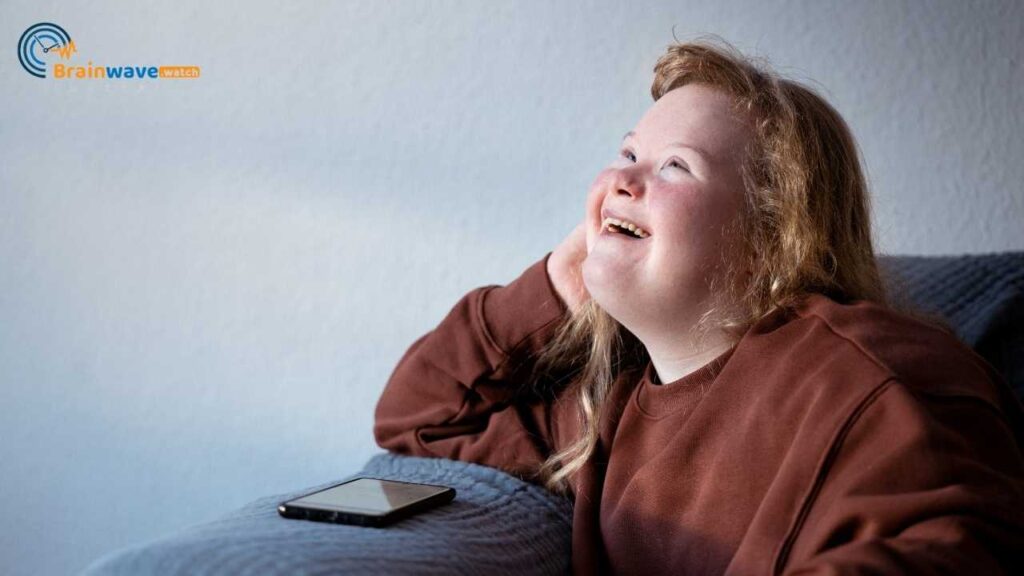You’re scrolling, tired, maybe on your third cup of coffee, trying to make sense of the endless labyrinth of data flooding your screen.
You see a post about “Down Syndrome colors” pop up, and instantly, you wonder: Is it a reference to a rainbow of hope or something more sinister?
Something lurking under the surface of our perceptions?
What does Down syndrome have to do with colors, anyway?
And just like that, you’ve been sucked in.
Now, picture this: You’re deep in the bowels of the internet, knee-deep in one of those articles you thought would be a casual click but are now trapped in. L
ike some academic heist movie where each scroll pulls you deeper into a story of symbols, meanings, and societal constructs.
This isn’t just about colors—it’s about perceptions. You’ll get the facts, yeah, but you’ll also catch the hidden strings of culture, psychology, and the emotional undercurrent behind how we look at people, colors, and Down syndrome. T
he colors you’ll see here aren’t just about hue; they’re about shifting perspectives—flashes of revelation, illuminated through the lens of something you never thought about.
The Question You Never Asked
Okay, let’s level with each other for a second. Down syndrome—what do you picture? The soft golden light of a sunset or the stark coldness of clinical white walls? Maybe, just maybe, your mind goes straight to the iconic blue.
But why?
Here’s the thing: What if color was a metaphor? A shortcut for something much more profound—a clue hidden in plain sight?
Something that connects the way we see the world, the way we see people, and how society reacts to those who are different.
- Down syndrome colors can mean a lot of things—depending on who’s talking. The answer is not as clear-cut as the hues in a box of crayons.
- Colors symbolize perceptions of society. They represent ideas about the disabled community, but also how those ideas evolve, adapt, and influence the way society views Down syndrome.
In 1985, the National Down Syndrome Society (NDSS) took a significant step by adopting blue and yellow as their official colors for awareness campaigns.
But this simple color choice had more going on beneath the surface than you’d expect. Let’s go beyond the bright yellow ribbon and uncover the layers lurking underneath.
Who Chose These Colors?
The short answer: No one. And also, everyone.
- Yellow & Blue → The universally recognized colors for Down syndrome awareness.
- Mismatched Socks → A quiet rebellion disguised as fashion.
- Red & Green? → Not official, but they sneak into the mix for some.
But why these colors? Here’s where things get weird.
The Case of the Blue & Yellow Conspiracy
Some say it started with the National Down Syndrome Society (NDSS). Others point to Down Syndrome International (DSi). There’s no definitive “aha” moment—just a slow, collective decision that, one day, became gospel.
Theories include:
🟡 Chromosomal Chromatics → The blue and yellow combo might represent the extra 21st chromosome in a roundabout way. (No, it’s not scientifically perfect, but let’s pretend for dramatic effect.)
🔵 Psychology of Colors → Blue = trust, wisdom, stability. Yellow = happiness, optimism, warmth. Put them together, and you’ve got the emotional equivalent of a hug.
🟡 Marketing, Baby! → NDSS, DSi, and other organizations started slapping blue and yellow on everything: T-shirts, posters, social media campaigns. If enough people see a color combo, it becomes the symbol.
It’s the same reason Coke is red, Starbucks is green, and your high school science textbook smelled like stress.
Down Syndrome as a Symbolic Puzzle
Picture a heist movie. You’re the mastermind, gathering intel from the shadows, your people—in this case, parents, activists, and researchers—are piecing together a grand scheme to shift the narrative. The goal? To humanize, elevate, and empower.
But, just like every good caper, there are obstacles, setbacks, and villains. Those who resist change—who fight to keep the conversation about Down syndrome as one of pity, isolation, or misunderstanding.
Color becomes the heist’s weapon of choice.
Blue and Yellow
Blue? It’s the color of trust, of stability. It speaks to a world that wants to be reassured, to feel calm. If the blue ribbon represents Down syndrome awareness, then it’s working on multiple levels.
Yellow? It’s the color of hope—bright, impossible to ignore, but also demanding attention.
- Blue: Symbolizes awareness. It’s steady, calm, professional.
- Yellow: Represents joy, hope, and optimism. A dash of brightness in the gray, like sunlight through clouds.
By pairing these two colors, we get the perfect mix—familiar enough to comfort the masses, but loud enough to demand attention.
This combination is also an unintentional contradiction. On one hand, it’s a “safe” palette—nothing too jarring, nothing too in-your-face.
But on the other, it forces you to ask: why do we always want to “sanitize” our awareness? Why not use colors that are more bold, more messy? What does it say about us when we reach for hues that seem… overly comforting?
Breaking Color Codes
Imagine you’re standing in the middle of an art gallery—rows upon rows of painted canvas, each representing a different era, a different view of disability, of how society sees people with Down syndrome.
Some of these artworks are drenched in hopeful yellows and soft blues, while others, strangely, seem bathed in darker shades, almost hidden in plain sight.
What happens when colors refuse to conform to their “expected” roles?
The glitch happens when color choices break the mold, when blue and yellow aren’t enough anymore.
Let’s talk about the unexpected palettes.
- Red: The color of urgency, of breaking through barriers. It screams, “Look at me!” It doesn’t sit well with a world used to the “soft” tones of blue and yellow.
- Purple: A royal shade, purple isn’t just a nod to beauty—it’s a statement of uniqueness. So why do we so rarely see purple tied to Down syndrome awareness? What’s stopping us from seeing disability as noble, as something that adds to the richness of society, instead of something that’s always portrayed as tragic?
- Black and White: What’s more striking? The absence of color, or the clash between opposites? Black and white images have long been used to signify stark contrasts, but why does disability have to be framed in terms of “either/or”?
Why Down Syndrome Colors Matter More Than You Think
Hold on—before you start scrolling away thinking this is all some theory about crayon colors and marketing gimmicks, let me drop a little knowledge bomb on you.
Color isn’t just a superficial layer. It impacts emotional perception and even cognitive response. The way we view someone or something can change based on how it’s framed.
So, why does it matter how we represent people with Down syndrome? Because it alters how we feel about them, how we respond to them, and how we interact with them.
Let’s break it down:
- Psychological Impact of Color on Perception
- Blue: Calms and reassures—this is why blue is often used in medical settings. It gives us that sense of safety and control.
- Yellow: Invites warmth, optimism. It’s the color that says, “Everything’s going to be okay.”
- Purple: Thought to elevate the subject, putting it in a place of dignity. When used for awareness, it shifts the narrative from pity to respect.
Colors might seem trivial, but the conversation about how they influence our societal views on disabilities is anything but.
What Could Colors Be?
But what if the colors we’ve adopted—the blue, yellow, and their safe associations—actually limit how we understand Down syndrome? What if we’ve trapped ourselves in a box of convenience, too afraid to see beyond what’s comfortable?
Maybe it’s time to step outside the lines of blue and yellow and let colors redefine the narrative.
In 2017, one activist group even proposed green as the color for Down syndrome awareness. Why? Because green is about growth, nurturing, and a world that evolves.
And that’s the thing: Down syndrome doesn’t just need awareness. It needs celebration. It’s not a “problem” to be solved—it’s a rich, complicated, joyful part of the human experience.
The colors we choose to represent Down syndrome are not just pretty packaging. They are messages to the world—about how we view disability. And we’re long overdue for a shift in that message.
Final Thoughts
As you reach the end of this rabbit hole, remember this: Color is power. It speaks louder than words, shapes how we feel, and often dictates how we act. But more importantly, the colors of Down syndrome awareness carry the weight of generations of activism, hope, and yes, frustration.
The revolution might not come with a bang, but with a subtle shift—a flash of purple when we least expect it. It’s about time we let the spectrum of color represent something more than just “awareness.” Let it represent the full range of what it means to be human.
You didn’t think this was just about colors, did you? No. It was always about the way we see.







